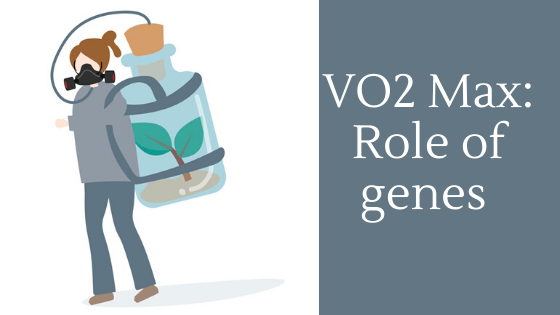VO2 Max or normally referred to as maximum oxygen uptake is generally associated with cardiorespiratory fitness &/or aerobic endurance. It is used to determine overall fitness level (specifically by athletes). It is the maximum volume of oxygen used per unit of time that a person uses at maximum exertion. It is measured as millilitres of oxygen used per kilogram of body weight(ml/kg/min). In simple words, it is our body’s ability to use oxygen during exercise. Our genes play a major role in determining the VO2 Max.
More oxygen you use during exercise, more energy or ATP (Adenosine Triphosphate) you can be produced in your cells, enabling you to withstand long hours /periods of exertion without fatigue. VO2 level is pretty high in case of high enduring athletes such as cyclist & marathon runners. A high VO2 max depends upon burning of carbs & fats using oxygen The VO2 value for a sedentary lifestyle varies from person to person with average hovering around 35ml/kg/min.
How well your body can take up oxygen, clear lactate & move efficiently determines your cardiovascular endurance. These factors are largely influenced by age, physical training & genes.
VO2 measure is normally used in sports to determine the impact of training & to study the influence of genetic factors in determining endurance capacity. VO2 when used with heart rate & performance can be used to structure curated training plans.
It is important to note that having a high VO2 Max will not lead to guaranteed success. VO2 Max only reflects the body’s oxygen uptake-uptake by lungs , transported by cardiovascular system & consumption in muscle fiber. It does not tell how efficiently your body uses oxygen for movement. How your body uses oxygen has an important bearing on your fitness level. This is where genetics comes into picture.
Role of genetics
Your ability to improve your VO2 Max level in response to your training is influenced by your DNA. Although VO2 level is impacted by genetic level, it can be further improved by training & weight loss. Genetics accounts for 47% of variation in training & workout responses between two persons. Your genes impact your innate ability to perform constant exercises. Some people can run continuously for long hours without tiredness or can outperform others little or without training.
Several genes influence the trainability of your VO2 Max: the ACE, PGC1A, CKM, AMPD1, AKT1, HIF1A, VEGF and ADRB2 genes. These genes impact cardiovascular endurance through regulation & adaptation of the cardiovascular system, lactate clearance, mitochondrial function & many other biological processes.
The two methods for increasing VO2 Max include volume training & intensity- your workout more & harder. You can increase your VO2 Max level by 15%-20% through rigorous training. Besides genetics & training, age, gender, current health & medical history also have impact on VO2 Max level.
For untrained individuals, it is relatively easy to improve VO2 Max level given that is an upper limit to VO2 Max. Trained individuals are already at their peak of VO2 Max level. Doing moderate & low intensity endurance/cardio training does improve VO2 Max level however high intensity training has much profound impact. It is a misconception that doing long hours of low intensity training has a similar impact as doing high intensity specific interval training.
If you are untrained, passion for fitness recommends you to start with low endurance training before starting specific interval high intensity training. This will improve your blood flow & enhance muscle’s capacity to use oxygen for generation of energy. On the other hand, if you are already doing cardio training, we would recommend you to include high intensity specific interval training. Athletes reach their optimal VO2 Max, by shifting their lactate and anaerobic thresholds closer towards their VO2 Max. These thresholds are discussed below:
- Aerobic threshold: This occurs at 60% of your aerobic capacity & 80% of your lactate- low intensity level which you can maintain for hours. It is measured by the point where lactate just begins to accumulate above resting level.
- Anaerobic threshold: This is the point where the amount of carbon dioxide exhaled becomes an unaligned amount of oxygen consumed indicating your body is starting to depend more on production of energy through glycolysis than on an aerobic fat burning system.
- Lactate threshold: This is the level when your body cannot clear lactate & lactate levels clearly accumulate. Exercise at lactate threshold can be done for a maximum of 1 hour.
In association & partnership with Mapmygenome, Passion for Fitness is offering genomics powered curated online fitness solutions which will help you get a workout & nutrition aligned with your gene study. The program will also provide you insight into your immunity & genetic predisposition to specific health conditions. Give your body another chance. Sign up for our program here.
